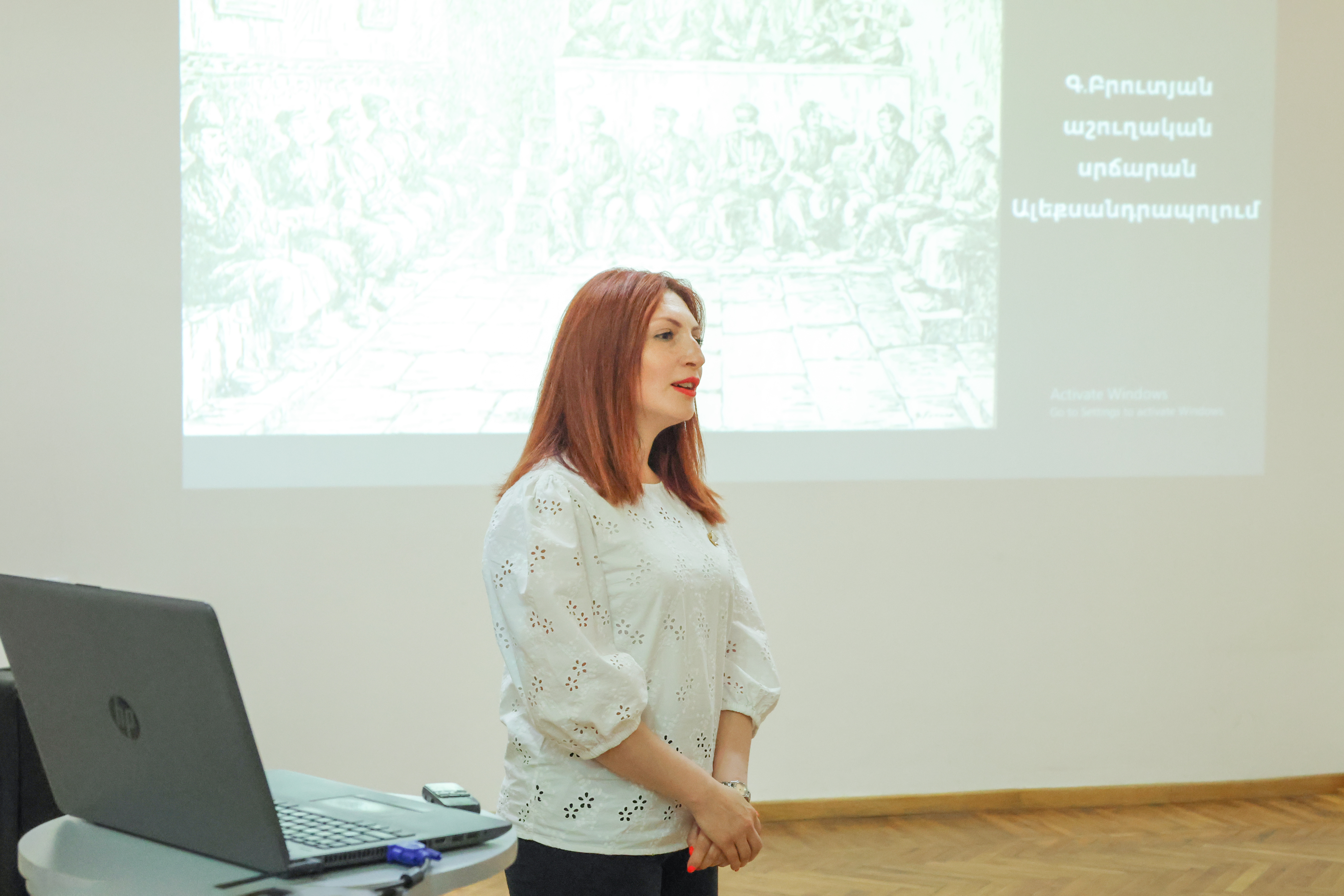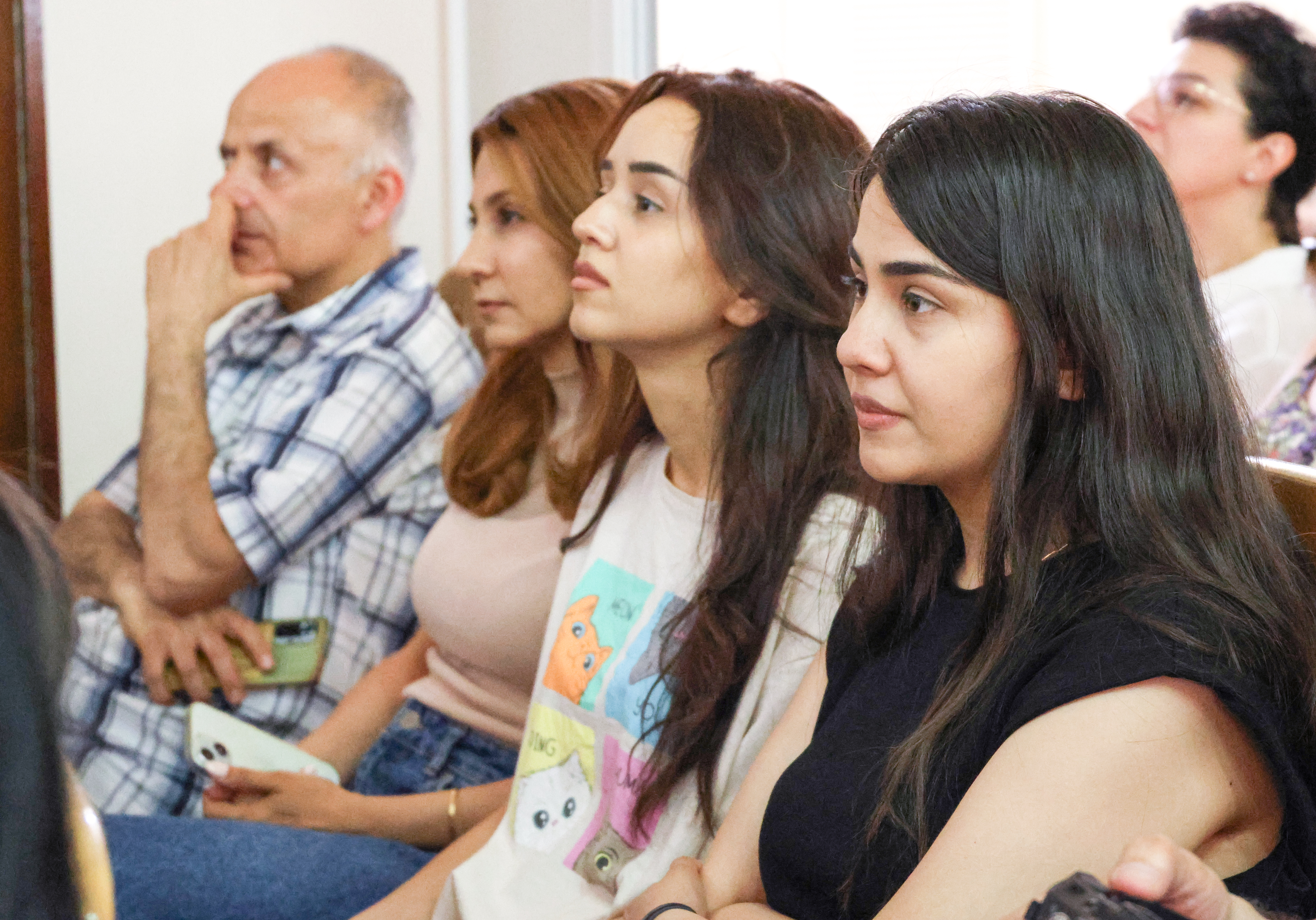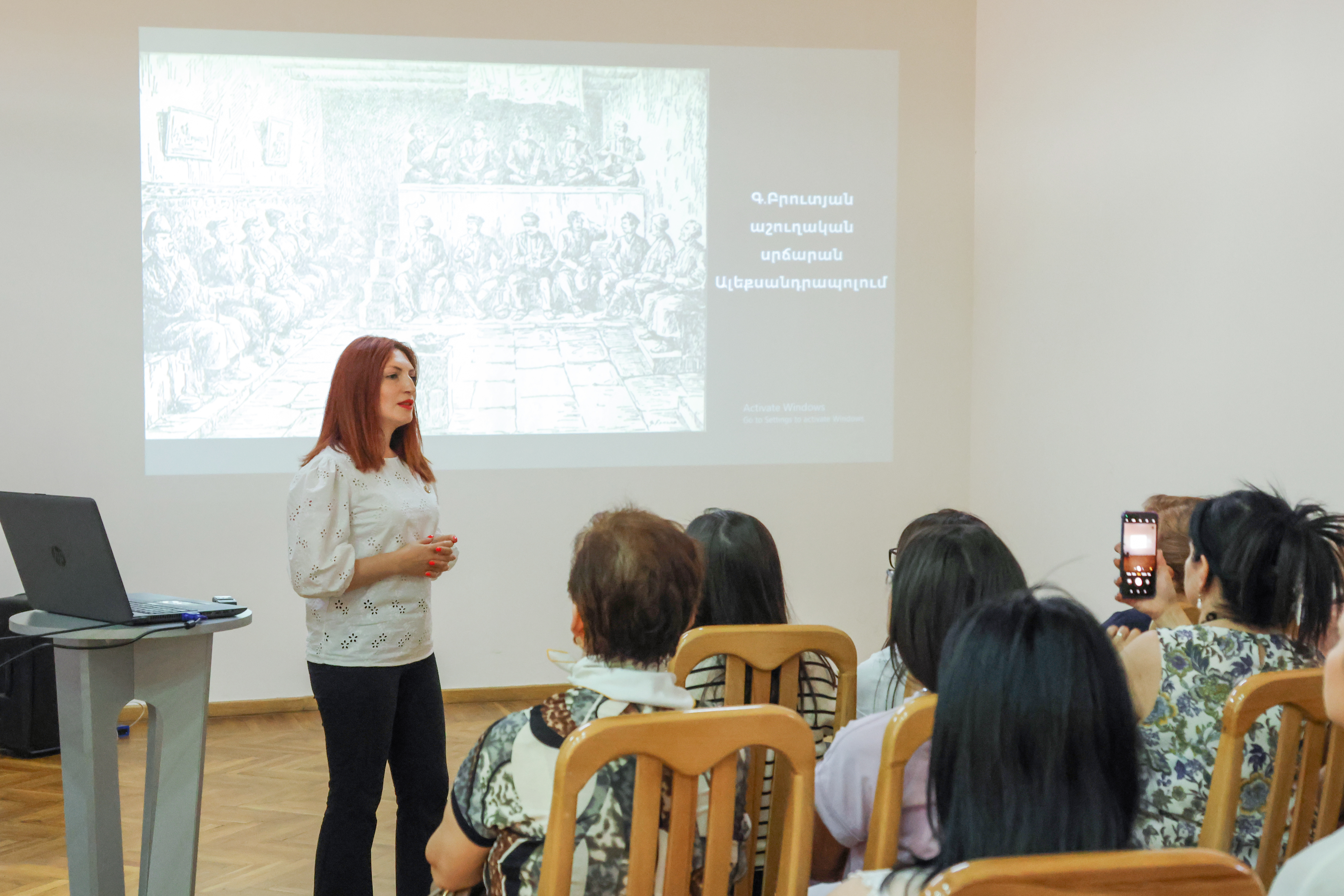June 19, 2024 | 16:45
Society
Research
Coffee, the most sought-after beverage, at the core of new study
The YSU History Museum named after Professor Ludwig Gharibjanyan recently hosted a discourse titled "Coffee in Armenian Urban Routine during the Late 19th and Early 20th Centuries" filled with captivating stories and information. At the discourse, Tatevik Saroyan, Director of the YSU History Museum, shared insights from her research on the topic, talking about the hustle and bustle of cafes and coffee-drinking traditions in the central cities of Eastern Armenia - Alexandropol and Yerevan.
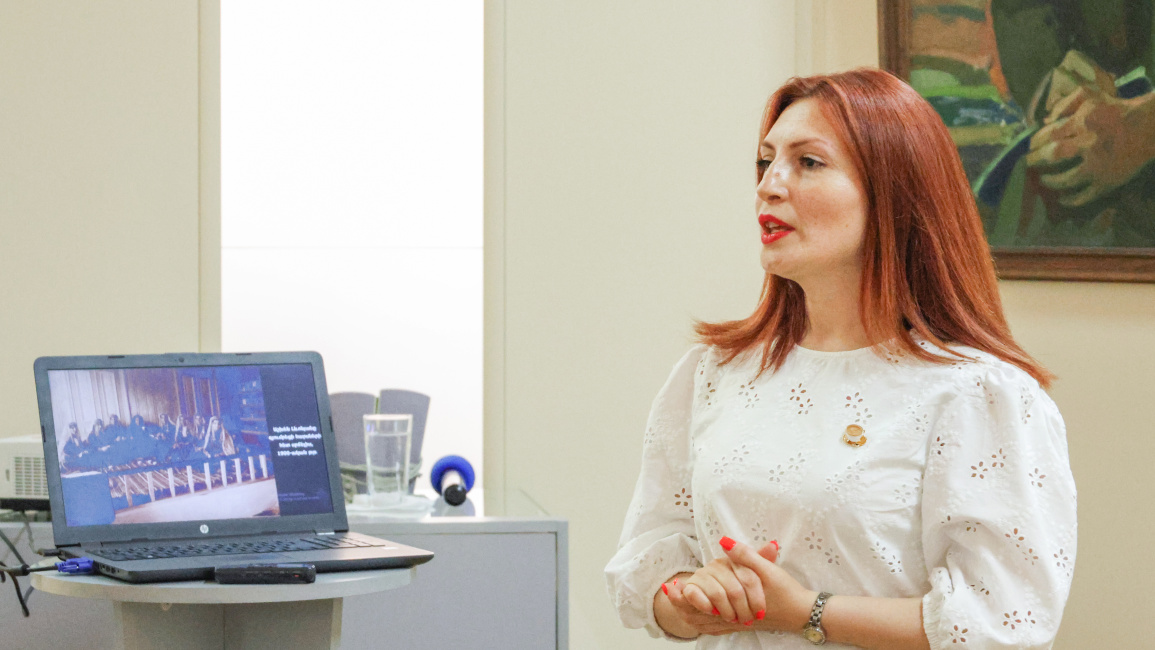
Tatevik Saroyan, Director of the YSU History Museum, started studying the topic in 2012. While working at the Yerevan History Museum, she saw coffee grinders and jazzves in the storeroom, after which the question arose: when did Armenians start drinking coffee? The speaker's search for the traditions of coffee-drinking led her to the storerooms and exhibitions of nearly every museum in Armenia.
"Coffee has been associated with Armenians since the 17th century (especially in the culture of Western Armenians). Historical trade records indicate that Western Armenians, along with Polish and Smyrna Armenians, actively participated in trade, exporting coffee to the West alongside silk. It is noteworthy that Armenian merchants played an important role in the distribution and use of this natural product," the speaker noted, emphasizing that Eastern Armenians were familiar with coffee as early as the 17th century, a fact mentioned by Jean Chardin during his visit to Yerevan. They say that when he fell ill, the monks gave him coffee as a healing remedy.
Referring to the traditions and history of coffee-drinking in Alexandropol, Tatevik Saroyan noted that the Armenians in Alexandropol refer to coffee as gahve. The word originated from the name of the Ethiopian state of Kaffa, which was later changed to kahve, gahve, kaffa, yet it was Armenians who created the word coffee (in Armenian -"սուրճ" pronounced as "surtsh").
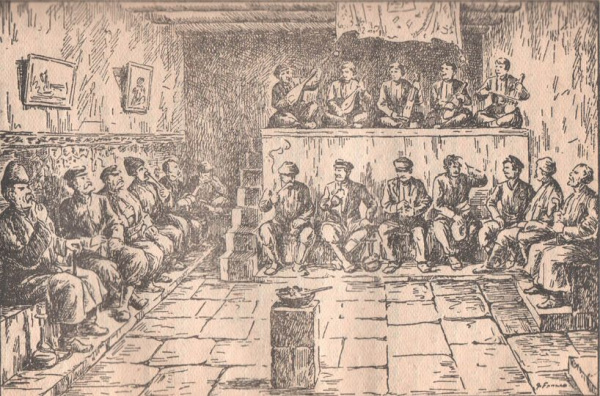
"At the end of the 19th century, ghahvexanes were famous in Alexandropol, where the people of Alexandropol drank gahve. These places served as gathering places for people working in the field of craft and art, masters met to conclude the day or discuss the ongoing work of the day," said T. Saroyan. For instance, in this photo, artist G. Brutyan depicts a cafe for ashughs, where ashughs performed and the artisans enjoyed these performances. At the age of 18, Ashugh Jivani also performed in these kinds of cafes; he performed at the Taloyents café, owned by Shara Talyan's grandfather.
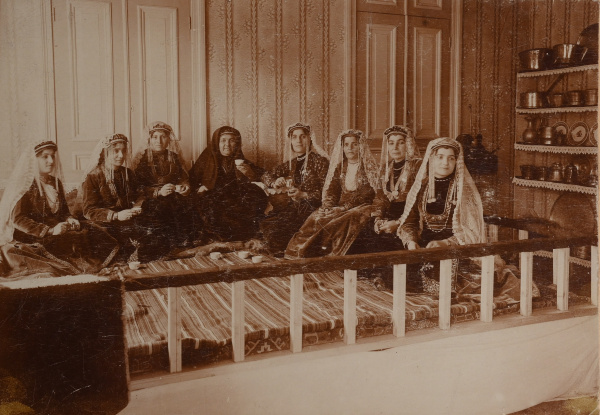
In this photo: A coffee shop in Alexandropol, captured by G. Brutyan
Speaking about the family of Armenian singer Shara Talyan, it is necessary to mention his aunt, Ashkhen Levonyan, who was the one who brought together the daughters-in-law of the family. The photo captures not just an ordinary gathering but a coffee party with the brides, a ritual where the younger generation is brought together by the elders.
In this photo: Ashkhen Levonyan having coffee with Gyumri brides, 1900s
"Cafes full of liberal ideas also operated in Alexandropol (for example, the cafe named "Tasht"), where Jivani, Avetik Isahakyan and many other thinkers often visited, talking about the liberation of the land. Similar conversations were held in this very cafe," the director of the YSU History Museum emphasized.
Speaking about Yerevan's cafe culture, she recalled historian Tatik Hakobyan, who noted in his work 'History of Yerevan' that the city had 23 cafes in the 19th century.
The speaker referred to Yeghishe Charents, the most coffee-loving thinker in Yerevan in the 1920s-30s, who drank coffee with a mug; this version of coffee-drinking later became an enjoyable pastime for the writer. Likewise, during his years of working with the orphans who survived the Armenian Genocide, for the poet Hovhannes Tumanyan, drinking coffee with brandy was not only a pleasure, but also a healing remedy against infectious diseases.
"Yeghishe Charents, Aksel Bakunts and other thinkers used to meet in the cafe on the first floor of the Yerevan Hotel. This place became closely associated with Charents due to his frequent visits. During the 1920s and 1930s, another renowned gathering place for thinkers was the Tourist Cafe, where they engaged in discussions about liberal ideas and the challenges facing the newly formed Soviet Union. These cafes garnered the attention of the State Security Committee due to the intellectual discourse that took place within their walls. Tragically, many participants in these discussions fell victim to repression and shootings in 1937," said the speaker, noting that in such an atmosphere of fear, cafes in Yerevan were simply shut down.
According to her, due to these events, there is no information in the national archive documents regarding the bustling activity of Yerevan cafes between 1937 and 1959. However, with the arrival of repatriates to Armenia in 1946, the tradition of drinking coffee was restored.
"My current study topic is "The Phenomenon of Coffee Usage in Eastern Armenia: A Nation of Coffee Enthusiasts in the Soviet Union". Data analysis reveals that Armenians drank more coffee than any other nation in the Soviet Union. Moreover, this cultural affinity is reflected in surnames like Gahvetshyan or Ghahvetshyan, Srtshagortsyan (from the aforementioned Armenian word "սուրճ"), which originated centuries ago from families deeply involved in the coffee-gahve craft. These families often operated coffee houses, roasteries, and grinders in central markets, leading to the adoption of their craft as surnames," summarized Tatevik Saroyan.
At the end of the event, coffee-loving university students asked the speaker questions and received comprehensive answers.



